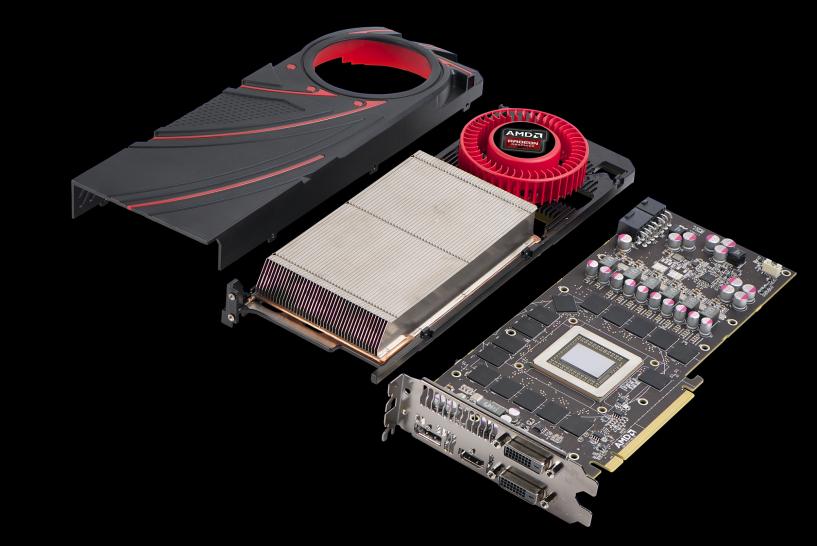3dfx is officially bankrupt and AMD’s R9-290X is coming (PCGH-Retro, October 15)

… 2002: 3dfx, already in financial difficulties, succeeded in spring 2000 in acquiring the 3D chip developer “Gigapixel”, which failed in the Xbox tender, with a $190 million share swap. This means that the thinned-out development department has been expanded by 40 top-class engineers. Ambitious plans for the future (multichip with tile-based deferred rendering) have already made some gamers’ hearts beat faster.
Meanwhile, 3dfx’s quarterly numbers were getting redder and redder. 12 million loss in the first quarter, 100 million in the second quarter, 180 million in the third quarter: 3dfx and Gigapixel ran out of cash in no time. In view of the lousy balance sheet, no financier could be found who wanted to restructure the company. Consequently, at the end of 2000, the company filed for Chapter 11 bankruptcy protection under US law. However, the management of 3dfx saw no better solution than to sell all brand rights, chips and patents to arch-rival Nvidia for a bargain price of 112 million US dollars and to initiate the liquidation of the company. “There was simply no other choice,” Gary Tarolli said. The end of 3dfx was formally heralded on October 15, 2002, the bankruptcy was thus also legally completed.
At the end of 2000, 3dfx was about to launch its long-awaited, completely new generation of chips. The specifications and key performance data published by former 3dfx employees painted a very promising picture. With four rendering pipelines, 52-bit rendering (internal), Pixel Shader 1.0, eightfold multitexturing, “scattered” (sparse grid) 4X multisampling and a 16:1 anisotropic filter, the requirements were met to take over the technology crown again. A powerful external Vertex and Curved Surfaces processor (“SAGE”) with a raw performance of 150 million triangles per second should ensure fast geometry acceleration. In multichip double operation, “Rampage” processors would have achieved a raw performance of 2000 MPixel/s (or 2000 MTexel/s) at 250 MHz and thus had a good chance of overcoming Nvidia’s Geforce3 chip, which was very late at the time (800 MPix/s, 1600 MTex/s) to trump. But all of that remains history.
More about 3dfx:
• PCGH Retro: 3dfx history
• PCGH Retro: 3dfx commercials
… 2013: AMD is defying Nvidia dominance in the graphics market and launching a new version of its Graphics Core Next architecture. The improvements primarily include additional audio DSPs for sound processing, which are marketed as true audio, more flexible and high-performance processing of pure calculations without graphics (“compute tasks”) and, of course, a larger number of units compared to the predecessor Tahit in the HD 7970 enhanced performance. The R9 290X, the top model of the new Radeon series, has 2,816 and thus 37.5% more arithmetic units than Tahiti – the interface to the memory has also been expanded by a third to match. When it comes to clock rates, AMD has to give up a little bit compared to the earlier top model, the HD 7970 GHz edition: only 2,500 MHz and thus 5 GTransfers/sec. are pending for the R9 290X, the 7970 GE achieved 3 GHz or 6.0 GT/s. AMD continued to drill into the front end and the number of ROPs also grew: Four triangles and 64 pixels through the entire pipeline per clock mean a smooth improvement over the predecessor. In particular, intermediate steps such as shadow calculations benefit from this high throughput.
Also new was the close interlocking of clock rate, power consumption, chip temperature and cooling, which AMD had already started with the 7970 GHz edition. An “Uber” version set at the factory on the reference model only limited the radial fan at a maximum pulse of 55% and a deafening 9.6 sone in gaming operation. A tamer “Quiet” variant already ended at 4.4 sone (40%), but prevented the R9 290X from being able to maintain its 1 GHz target frequency in gaming mode. In the game benchmark, this cost up to around 15 percent performance depending on the game – on average, the Quiet mode achieved around 90 percent of the Uber mode.
In our benchmarks, the R9 290X in “Uber mode” also took the lead in the performance index of PCGH issue 12/2013 and accordingly took over the 100 percent mark. The previously leading Geforce GTX Titan was 93.6%, the HD 7970 GE 76.7%. The GTX 780 Ti had just been announced at the time the magazine went to press, and the GTX Titan was Nvidia’s strongest weapon when the R9-290X was launched on October 15th.
You can find more details in our launch article on AMD’s Radeon R9-290X.
Reference-www.pcgameshardware.de